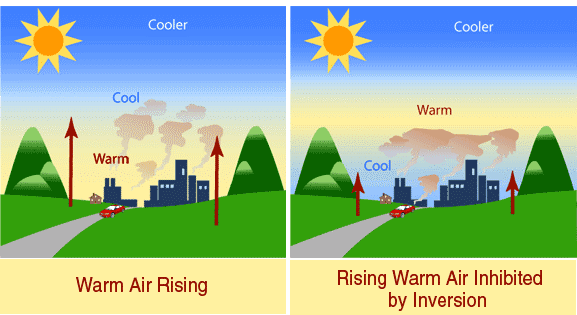Particle pollution, also known as particulate matter, is a general term for a mixture of solid and liquid droplets suspended in the air. Particle pollution can be made up of several different components, including acids, inorganic compounds, organic chemicals, soot, metals, soil or dust particles, and biological materials (such as pollen and mold spores) – all of which can have detrimental effects to the human respiratory system.
Yes, the air we breathe indoors and outdoors always contains particle pollution however, some particles are so small they cannot be detected via sight alone – many require a microscope.
The smaller particles generally pass through the nose and/or throat and enter the lungs. Once inhaled, these particles can affect the lungs and heart and cause serious health effects in individuals at greatest risk, such as people with heart or lung disease, older adults, and young children.

Are there different types of particle pollution?
Some particles, known as primary particles, are emitted directly from a source, such as construction sites, unpaved roads, smokestacks, or fires. Other particles, known as secondary particles, form in complicated atmospheric reactions involving chemicals such as sulfur dioxides and nitrogen oxides that are emitted from power plants, industries, and automobiles. Secondary particles make up most of the fine particle pollution in the United States.
Where and when is particle pollution a problem?
Particle pollution is found everywhere – not just in haze, smoke, and dust, but also in air that looks clean. Particle pollution can occur year-round and presents air quality problems at concentrations found in many major cities throughout the United States.
Some particles can remain in the atmosphere for days to weeks. Consequently, particle pollution generated in one area can travel hundreds or thousands of miles and influence the air quality of regions far from the original source.
Particle pollution levels can be especially high in the following circumstances:
– Near busy roads, in urban areas (especially during rush hour), and in industrial areas.
– When there is smoke in the air from wood stoves, fireplaces, campfires, or wildfires.
– When the weather is calm, allowing air pollution to build up.
Is there a seasonal pattern?
Yes, fine particlepollution often has a seasonal pattern. Fine particle concentrations in the eastern half of the United States are typically higher from July through September, when sulfates are more readily formed from sulfur dioxide (SO2) emissions from power plants in that region and contribute to the formation of fine particles.
Fine particle concentrations tend to be higher from October through December in many areas of the West, in part because fine particle nitrates are more readily formed in cooler weather and due to wood stove and fireplace use.

This situation is exacerbated by complex terrain. Inversions are more likely to occur in valleys where pollution is trapped both vertically (by the warmer air above) and horizontally (by the valley walls).
To find out more about particle pollution patterns in your area, visit EPA’s AirData website; and to combat your internal air (corporate or residential) please contact us for a full assessment on your air quality needs.
Source: United States Environmental Protection Agency, www.epa.gov

